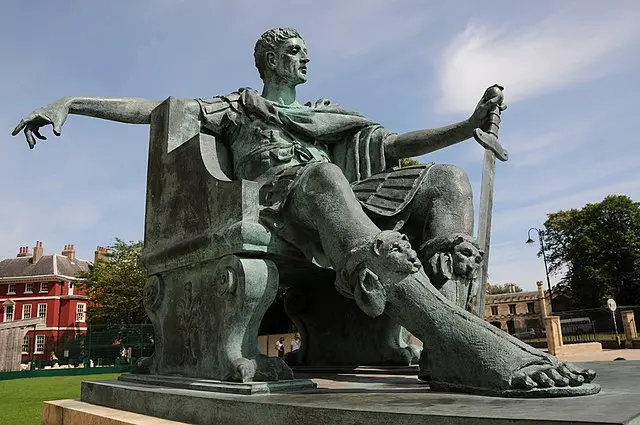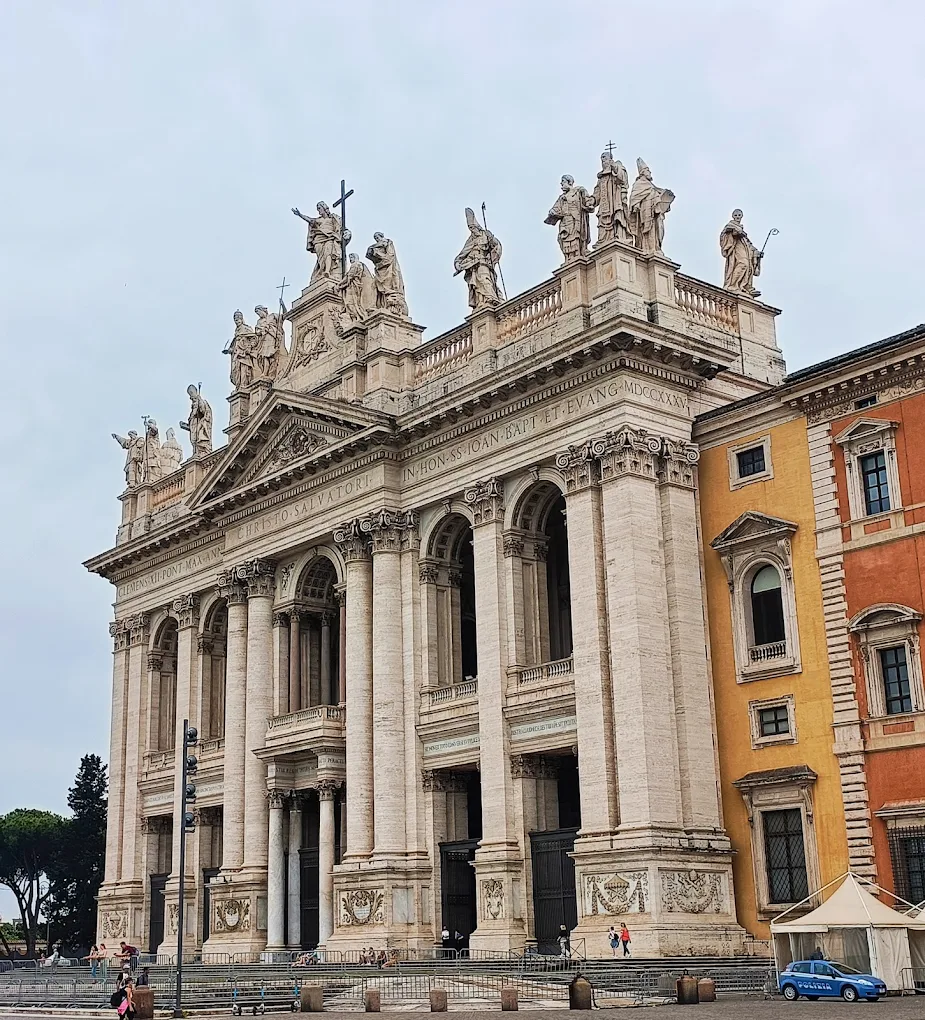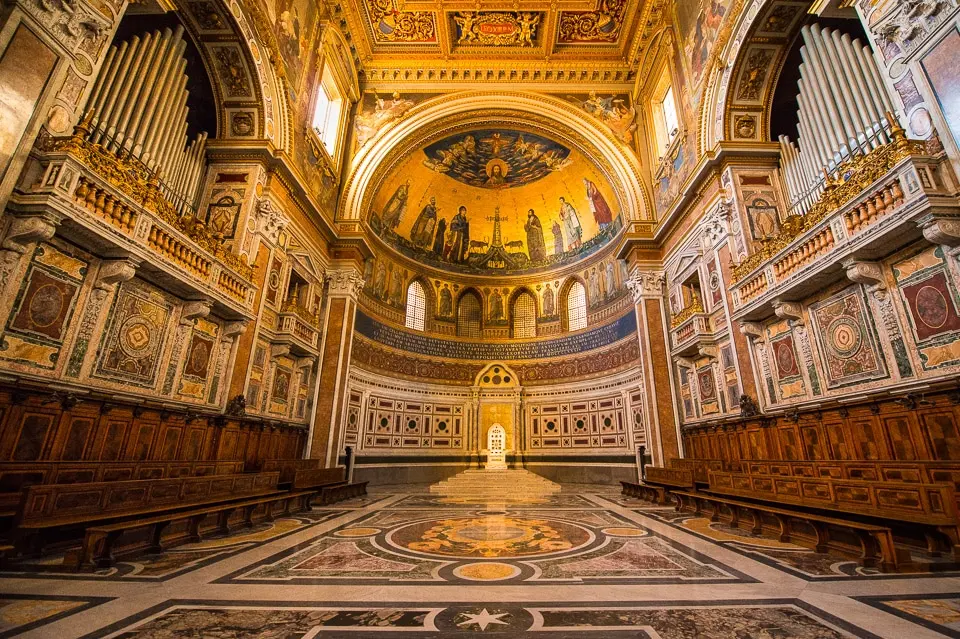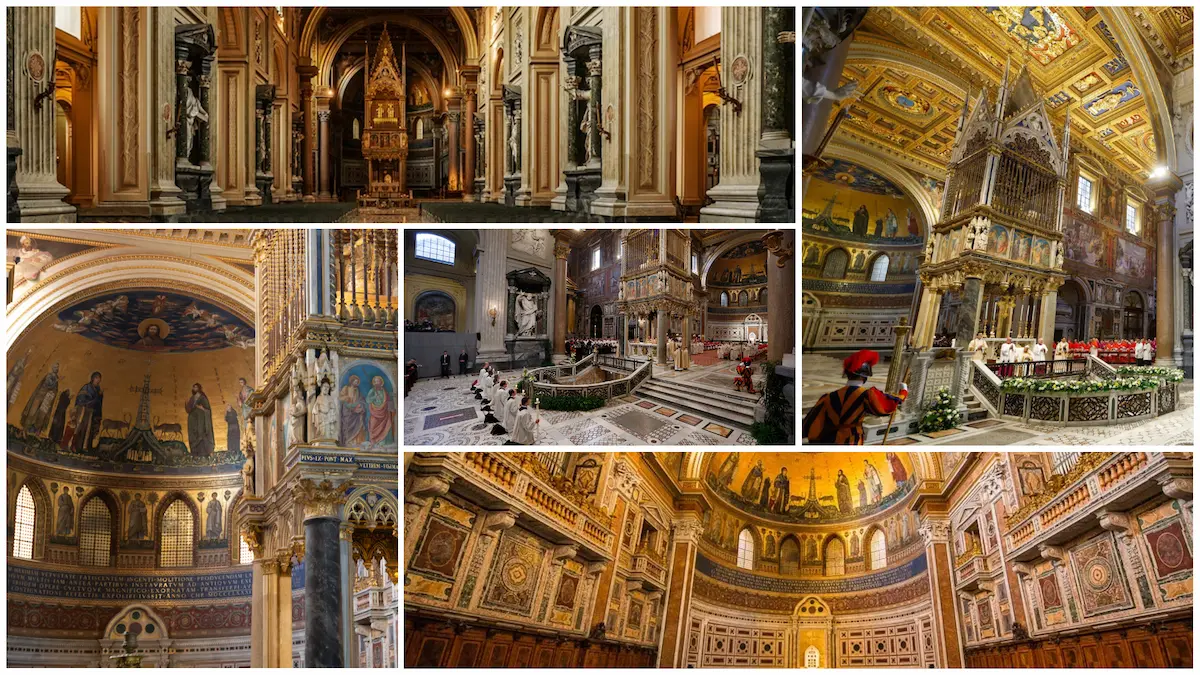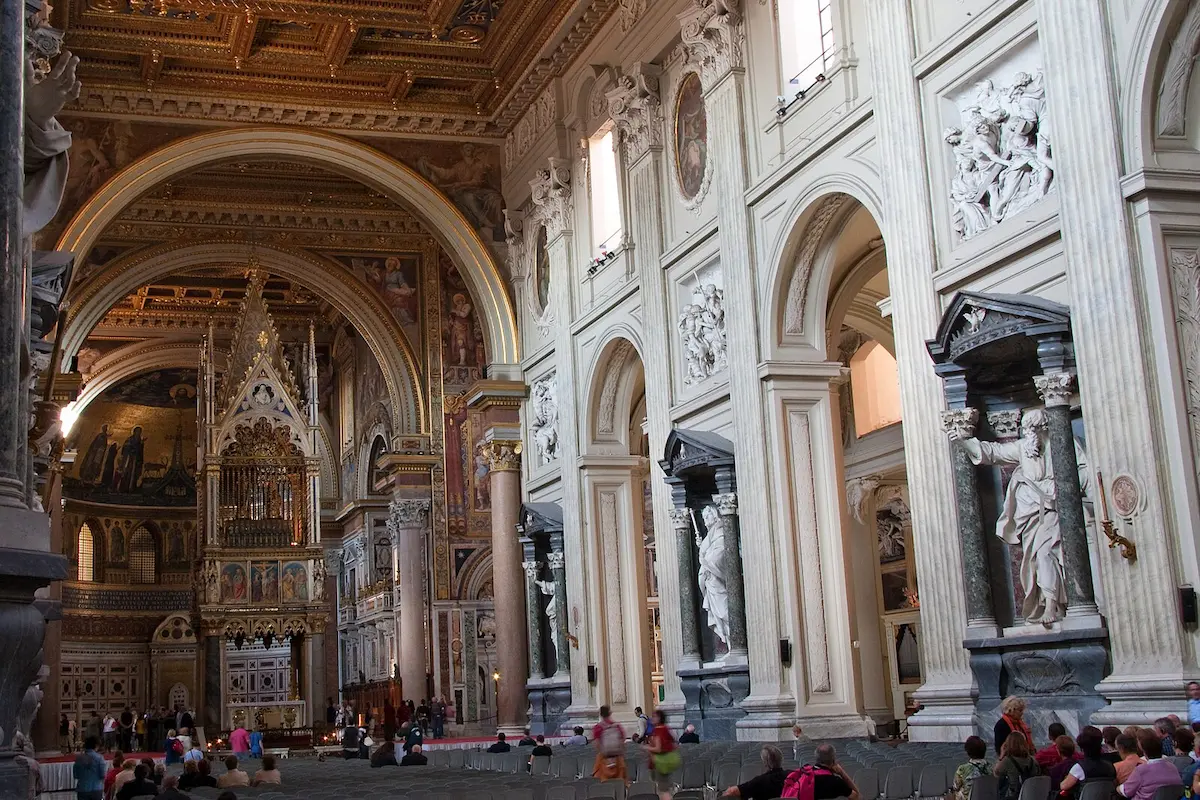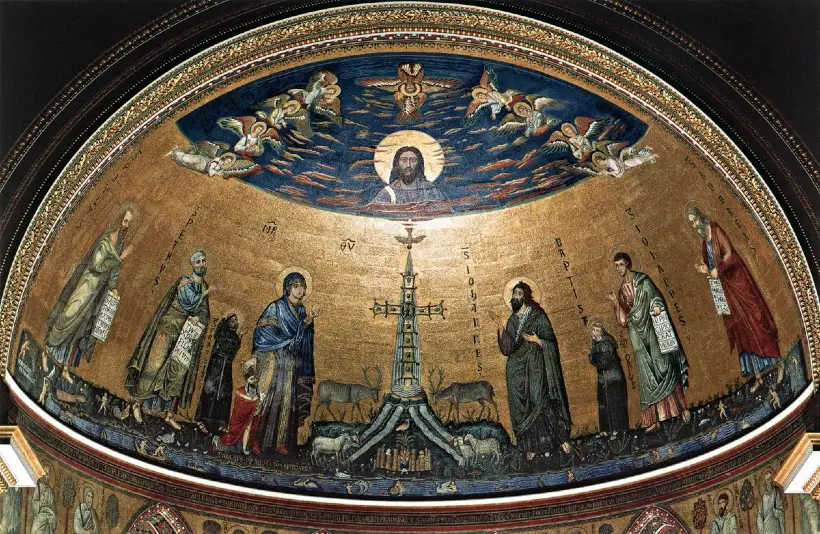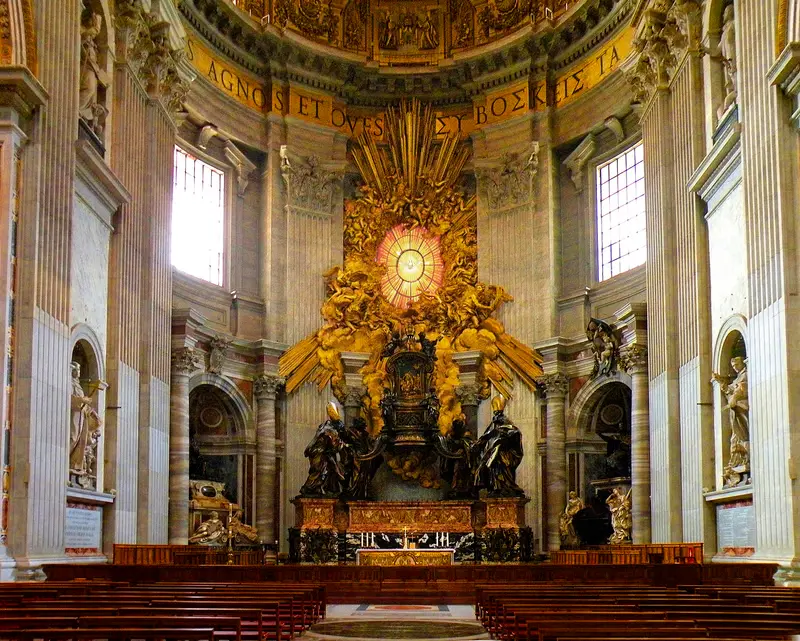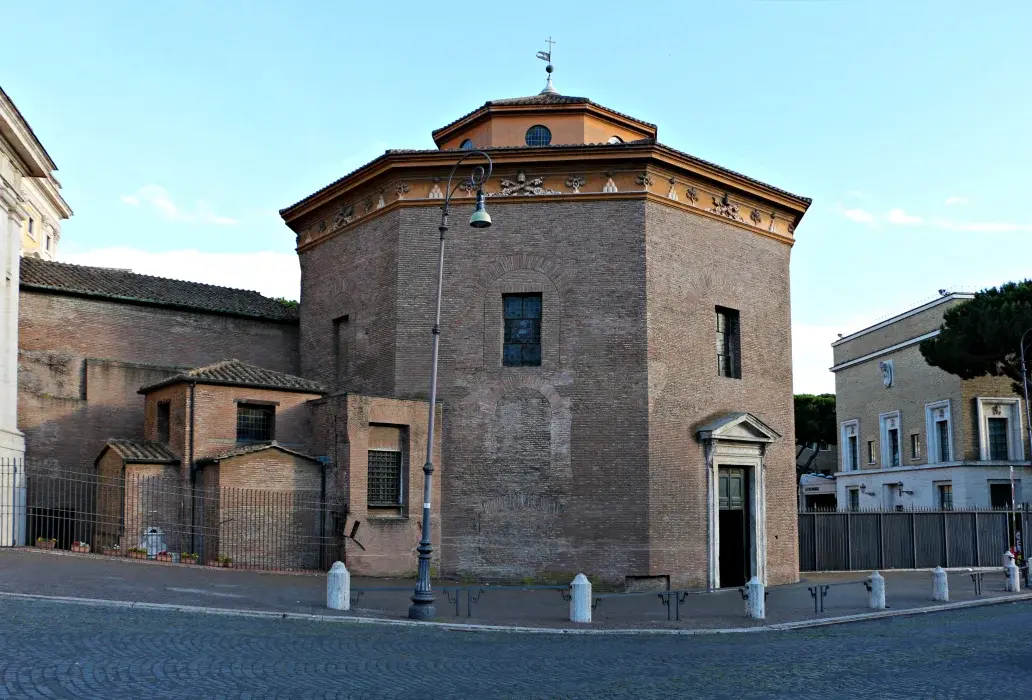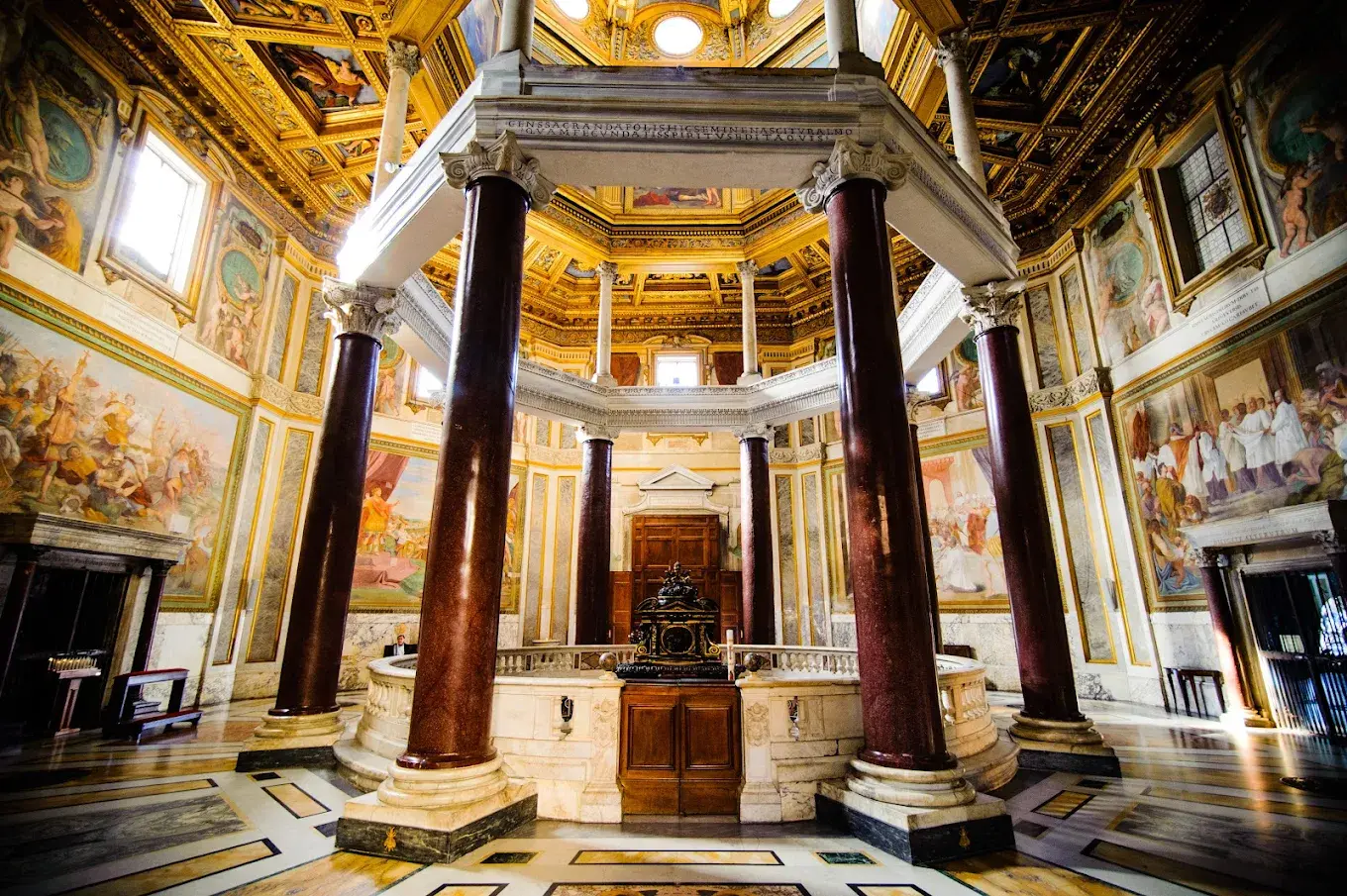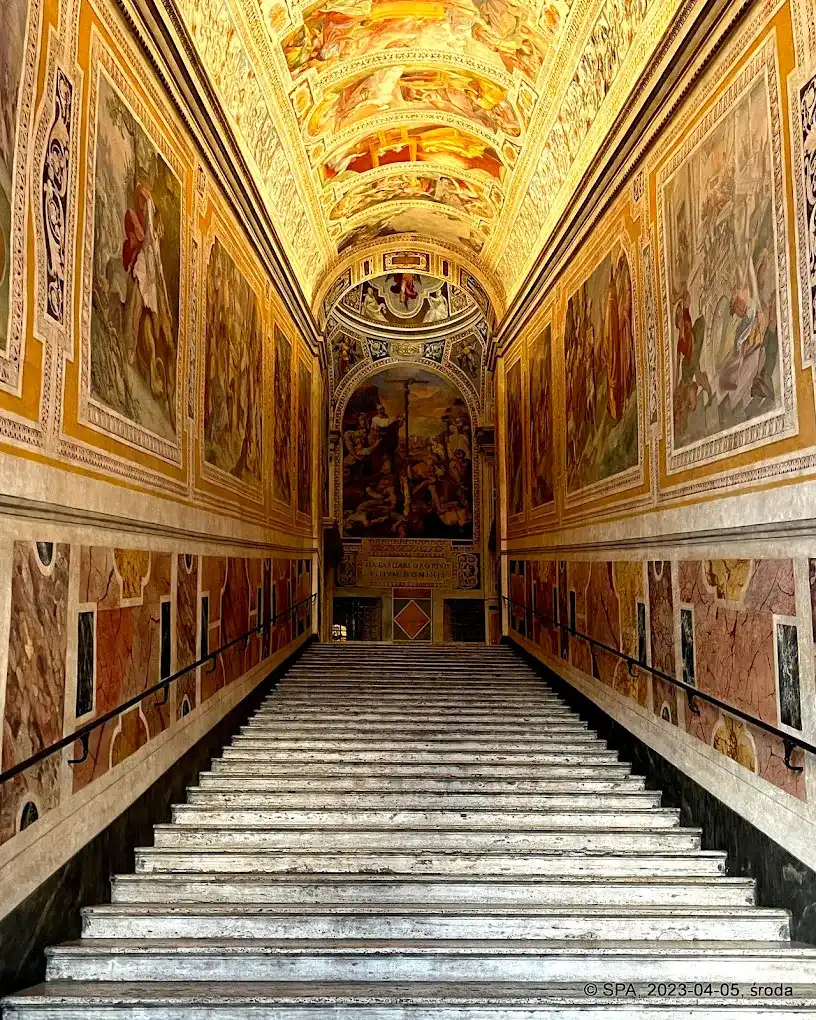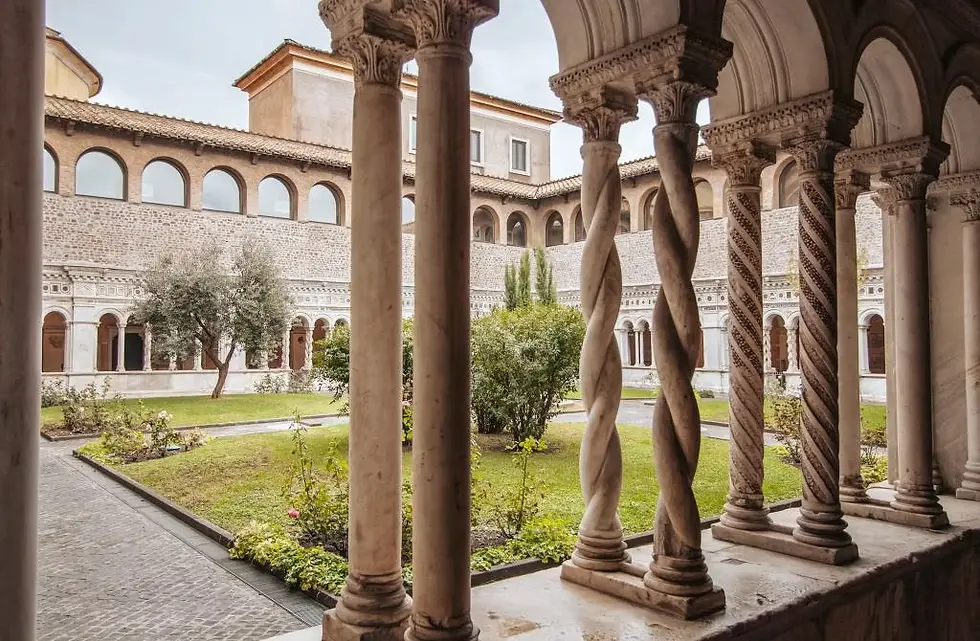Basilica of San Giovanni in Laterano – Rome’s True Cathedral
The Basilica of San Giovanni in Laterano is the oldest public church in Rome and the official cathedral of the Bishop of Rome, the Pope. Consecrated in 324 AD by Pope Sylvester I, it holds the highest rank among all Catholic churches worldwide. Originally named the Church of the Savior, it has remained a central place of worship for nearly 1,700 years.
Built on the former palace of the Laterani family, Roman nobles who served emperors, the property came into Emperor Constantine I’s hands around 311 AD. He later gave it to the Church, which hosted an important council in 313 AD that condemned the Donatist sect, showing the basilica’s early role in Christian history.
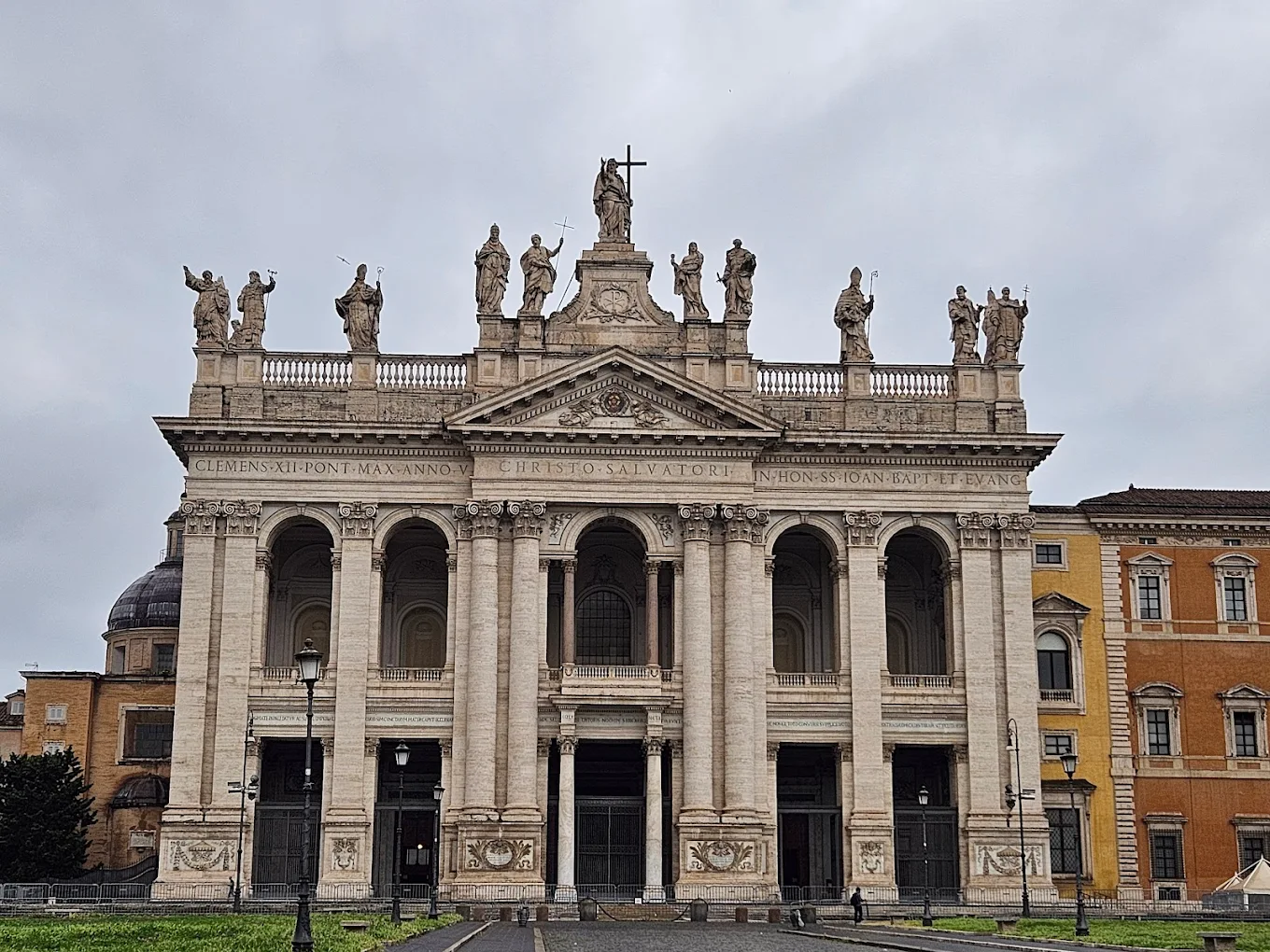
Though first dedicated to Christ the Savior, the basilica was rededicated in later centuries to St. John the Baptist and St. John the Evangelist. It served as the Pope’s residence until fires and the papacy’s move to Avignon caused its decline.
Today, visitors explore centuries of worship and history here. For those with luggage, Sapta Luggage Storage and Transfers nearby offers secure, convenient storage for a hassle-free visit.
The Church That Came First: San Giovanni in Laterano’s Origins Under Emperor Constantine
Built in 313 AD under Emperor Constantine
The Basilica of San Giovanni in Laterano holds the distinction of being the first church officially recognized by the Roman Empire. Its construction began shortly after the Edict of Milan in 313 AD, which granted Christians the right to worship freely. Emperor Constantine I, newly converted to Christianity, provided both the land and the support needed to establish this monumental structure.
The site was previously the private estate of the Laterani family, once loyal administrators to the imperial court. Following its confiscation by the state, Constantine gave the land to the bishop of Rome. This act not only signaled a major shift in imperial policy but also laid the groundwork for the future of organized Christianity in the Western world.
Unlike hidden house churches of the past, this basilica was built to be seen. Its large open nave, clerestory windows, and grand entry reflected both spiritual and political power. As the first public church of its kind, it quickly became a center of Christian authority in the city.
Even in its earliest form, the basilica represented more than a place of worship. It marked a new chapter where Christian faith and Roman identity began to intertwine — a relationship that still shapes the Church today.
First public Christian church in Rome
San Giovanni in Laterano stands as the first public Christian church built in the city of Rome. Before its construction, early Christian communities met in private homes or hidden spaces, often facing persecution. The legalization of Christianity in 313 AD changed this, and the basilica became the Church’s first legal, open place of worship.
Its public status was more than symbolic. For the first time, Christian rituals were celebrated in full view, within a space designed specifically for community worship. The basilica gave structure and visibility to a faith that had previously survived in secrecy. This openness helped unify believers and offered a clear center for religious life in the capital of the empire.
The original basilica likely followed the Roman architectural model used for civic buildings, repurposed here to serve religious needs. With a wide nave, side aisles, and an apse, it set the template for churches across Europe for centuries to come.
By serving as the visible home of the Christian Church in Rome, San Giovanni in Laterano helped anchor the religion in the heart of the empire. Its presence made Christianity part of everyday life in a way that was entirely new for the Roman world.
Official seat of the Pope
Though many associate St. Peter’s Basilica with the papacy, San Giovanni in Laterano holds the official title of the cathedral of Rome. It is the ecclesiastical seat of the Bishop of Rome — a role held by the Pope himself. This distinction gives the basilica a higher rank than any other church in the Catholic world, including those inside Vatican City.
From the time of its consecration in 324 AD, the basilica became the primary residence of the popes for over a thousand years. The adjoining Lateran Palace served as the papal residence until the 14th century, when the seat of the papacy moved to Avignon. During that period, San Giovanni remained the spiritual center of Roman Christianity.
Even today, important papal liturgies are held at the basilica, especially during the Holy Week. The Pope celebrates the Mass of the Lord’s Supper here on Holy Thursday, reaffirming its central role in Church tradition. The Lateran Archbasilica is also where new Popes take possession of their role as Bishop of Rome.
San Giovanni in Laterano is not just a historic structure. It is an active symbol of the Pope’s authority in Rome — a church that continues to play a living role in global Catholic life.
San Giovanni in Laterano Through the Centuries: Surviving Change and Renewal
San Giovanni in Laterano has endured nearly 1,700 years of Roman history. Fires, earthquakes, and wars left their mark, but the basilica continued to stand, repaired and rebuilt across centuries. Its ability to survive reflects not only the strength of its structure but also its importance to the Church and the city.
Major fires in 1308 and 1361 severely damaged both the church and the Lateran Palace. Despite restoration efforts, the original medieval splendor was lost. By the time the papacy returned to Rome from Avignon in 1377, much of the basilica had already been reshaped by necessity and changing styles.
In the 16th and 17th centuries, the basilica underwent further transformations. Pope Sixtus V ordered the demolition of parts of the old palace, and architects like Borromini led large-scale renovations. Each change added a new layer, turning the basilica into a living timeline of Roman and Christian architecture.
Even with all these changes, San Giovanni in Laterano has never lost its central role. It remains a space where faith, history, and identity meet — a constant presence in a city defined by movement, empire, and belief.
What You’ll See at San Giovanni in Laterano (and Why It Matters)
San Giovanni in Laterano is more than a historic building — it’s an active cathedral filled with art, faith, and centuries of Roman life. Each part of the basilica tells a story, blending spiritual meaning with the craftsmanship of different eras. Visitors walk through not just a church, but a layered experience shaped by emperors, popes, and artists.
The interior of San Giovanni in Laterano holds several must-see highlights. From towering sculptures to quiet chapels, each feature carries both visual beauty and religious purpose. Among them, the statues of the twelve apostles stand out as the centerpiece of the nave.
12 Apostles Statues at San Giovanni in Laterano
Lining the main nave are twelve massive statues, each depicting one of Christ’s apostles. These were sculpted in the early 18th century under Pope Clement XI, with designs by some of Rome’s leading artists of the time. Each figure is larger than life, carved with rich detail and expressive posture.
The apostles are placed in large wall niches, standing as silent witnesses to the Church’s foundations. Their placement along the nave draws visitors’ eyes toward the altar, guiding both movement and attention. Together, they give form to the Church’s roots and its ongoing legacy.
Their presence reminds visitors that this basilica is not just sacred space — it is a place shaped by those who helped spread the faith itself.
Golden Mosaics in San Giovanni in Laterano’s Apse
High above the altar and along the apse, brilliant golden mosaics catch the light and draw the eyes upward. These artworks reflect centuries of craftsmanship and devotion, with scenes that center on Christ, the cross, and symbols of divine authority.
The current apse mosaic dates back to the 13th century, restored and preserved through time. It shows Christ as the source of life, surrounded by saints, angels, and flowing streams.
Gold leaf, deep blues, and vibrant reds fill the space with warmth. These mosaics do more than decorate — they lift the spirit and frame the church’s sacred purpose.
Main Altar with Relics of Saints Peter and Paul
The main altar of San Giovanni in Laterano holds great spiritual significance. It is believed to contain relics of Saints Peter and Paul, two pillars of early Christianity.
This altar serves as the focal point for worship and ceremony, symbolizing the church’s direct link to the apostles. Pilgrims and visitors alike are drawn here to honor the faith’s origins.
The presence of these relics strengthens the basilica’s role as a sacred site, connecting believers with the history and heart of the Christian tradition.
The Historic Lateran Baptistery Near San Giovanni in Laterano
The Lateran Baptistery stands just a short walk from the basilica and is one of the oldest Christian baptisteries in the world. It was built by Emperor Constantine around the same time as the basilica itself, making it a key part of early Christian Rome.
This octagonal structure was designed specifically for baptismal rites. Its shape symbolizes resurrection and eternal life, fitting for a place where new members join the Church through baptism. Inside, a large basin holds the water used in the sacred ceremony.
The baptistery’s walls are decorated with ancient mosaics and Christian symbols, preserving the art and faith of early Christians. Visiting the baptistery offers a glimpse into how Christianity was practiced in its early years and underscores the spiritual significance of the Lateran complex.
Scala Santa (Holy Stairs), Across from San Giovanni in Laterano
Just across the street from the basilica lies the Scala Santa, or Holy Stairs. These 28 marble steps are believed to be the very stairs Jesus climbed on his way to trial before Pontius Pilate. According to tradition, they were brought from Jerusalem to Rome by Saint Helena, mother of Emperor Constantine.
Pilgrims ascend the stairs on their knees as an act of devotion and penance, reflecting centuries of Christian practice. The stairs are enclosed in a protective structure to preserve their fragile condition.
Visiting the Scala Santa offers a unique spiritual experience. It connects the faithful not only to Christ’s passion but also to the deep history of Rome’s Christian community. Nearby chapels and relics add further layers of meaning to this important site.
The Cloister of San Giovanni in Laterano: A Quiet Retreat
Tucked away beside the basilica, the cloister offers a peaceful escape from the city’s bustle. This quiet, enclosed garden area dates back to the 13th century and features elegant arches and columns surrounding a serene courtyard.
The cloister once served as a place for clergy to meditate, pray, and find solitude during their duties. Its calm atmosphere invites visitors to pause and reflect, providing a contrast to the grand spaces inside the basilica.
Filled with plants, stone benches, and soft light, the cloister feels like a hidden gem within the Lateran complex. It highlights the spiritual and architectural diversity of the site, reminding visitors of the simple moments of peace that have been part of this sacred place for centuries.
When to Go for a Better Experience at San Giovanni in Laterano
Choosing the right time to visit San Giovanni in Laterano can make all the difference. The basilica welcomes thousands of visitors, but timing your trip can help avoid crowds and create a more peaceful experience.
Best Times to Visit San Giovanni in Laterano: Morning or Late Afternoon
Early mornings and late afternoons offer the quietest moments to explore. At these times, fewer tourists fill the space, allowing visitors to admire the art and architecture without distractions. The softer natural light during these hours also adds warmth to the mosaics and statues.
San Giovanni in Laterano Is Less Crowded Than the Vatican
Compared to the Vatican, San Giovanni in Laterano is much less crowded. Many tourists focus on St. Peter’s Basilica, leaving the Lateran quieter and easier to enjoy. This makes it ideal for those seeking a more contemplative visit or wishing to avoid long lines.
Free Entry and Tours at San Giovanni in Laterano
Entry to the basilica is free, making it accessible to everyone. Guided tours are available for those who want deeper insight into the history and symbolism. Booking a tour can enrich the visit and provide context that enhances appreciation.
San Giovanni in Laterano Dress Code: Shoulders and Knees Covered
Visitors should dress respectfully. Shoulders and knees must be covered inside the church. This dress code reflects the sacred nature of the space and is strictly enforced. Planning your outfit ahead ensures a smooth entry without hassle.
Lockers & Luggage Storage Services Near San Giovanni in Laterano
Exploring San Giovanni in Laterano with heavy bags can be tiring and take away from the experience. Visitors often look for reliable luggage storage services close to the basilica to lighten their load.
Just two minutes away, Sapta Luggage Storage and Lockers Service offers clean, secure, and affordable luggage storage services. Whether carrying backpacks, suitcases, or shopping bags, Sapta provides easy drop-off options, so visitors can explore without worrying about their belongings.
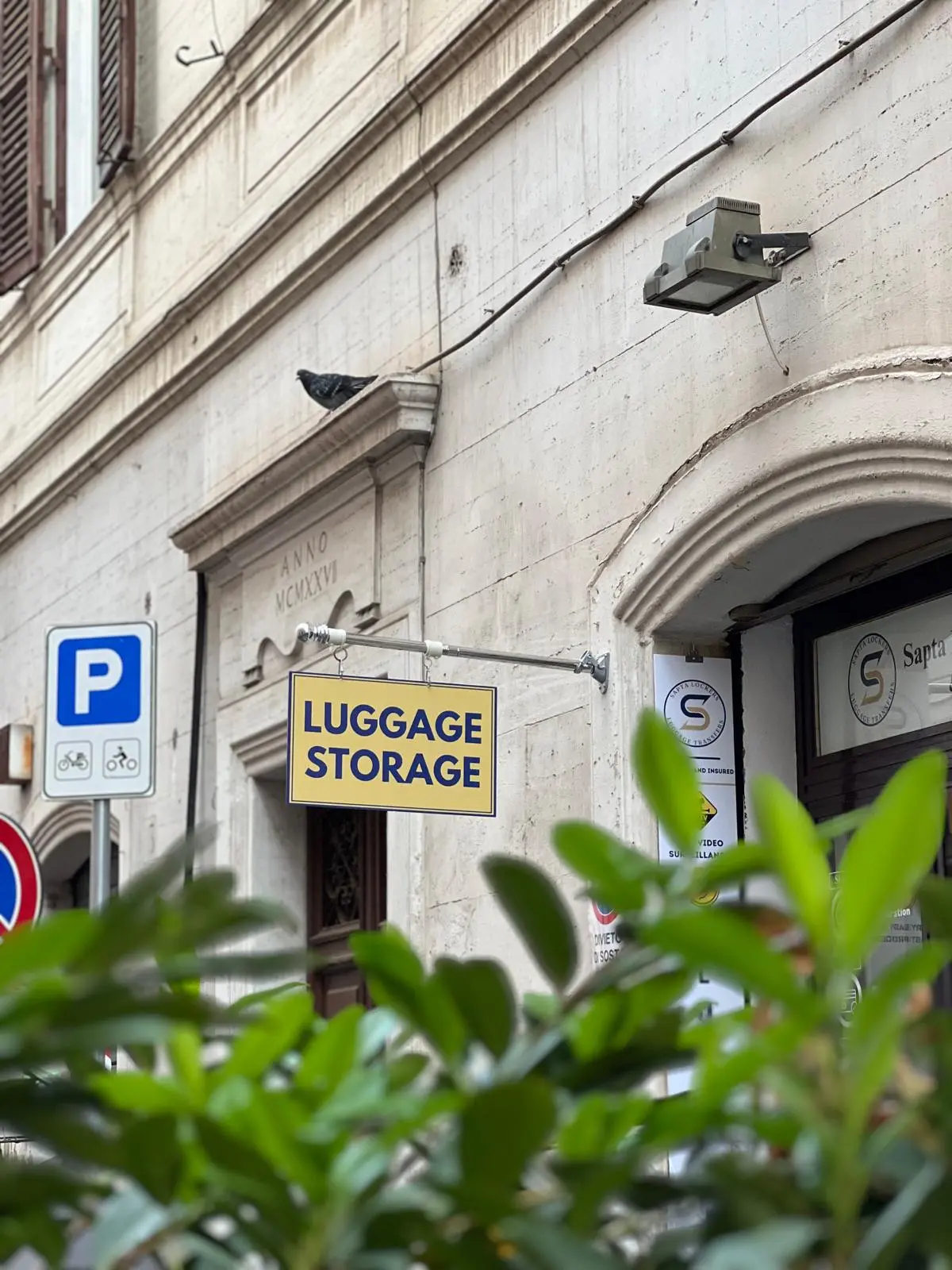
The friendly, English-speaking staff at Sapta make the process smooth and stress-free. Their lockers service is ideal for short-term storage, giving travelers flexibility and peace of mind while visiting the basilica and nearby attractions.
Booking Sapta’s luggage storage service is quick and convenient. A clear map pin guides visitors directly to their location, making it the perfect solution to enjoy San Giovanni in Laterano hands-free.
Easy Directions That Actually Work to San Giovanni in Laterano
Finding San Giovanni in Laterano is simple thanks to its central location. Whether arriving by public transport or on foot, clear routes make visiting stress-free. Knowing the best ways to get there saves time and ensures a smooth experience.
Metro Line A – San Giovanni
The San Giovanni metro station on Line A stops right by the basilica. From the station exit, it’s just a short walk to the main entrance. This metro line connects easily with major parts of Rome, making it a convenient choice for most visitors.
Hop-on Hop-off Buses Stop Here
Several hop-on hop-off bus routes include San Giovanni as a key stop. These buses offer flexible sightseeing options and drop visitors within minutes of the basilica. It’s an ideal way to combine transportation and tourism in one.
San Giovanni’s proximity to the Sapta Luggage Storage and Lockers Service adds extra convenience. Just minutes away, Sapta offers secure luggage storage, letting visitors explore freely without carrying bags.
Other Sights Nearby Worth Seeing
San Giovanni in Laterano is surrounded by several notable attractions that enrich any visit. Exploring nearby sites adds depth to the experience and offers a fuller picture of Rome’s religious and cultural history. These spots are easy to reach and well worth the time.
Scala Santa (Holy Stairs)
Located just across the street from the basilica, the Scala Santa, or Holy Stairs, draws pilgrims and visitors alike. These 28 marble steps are believed to be the very ones Jesus climbed before his trial by Pontius Pilate. According to tradition, Saint Helena, mother of Emperor Constantine, brought the stairs from Jerusalem to Rome.
Visitors often climb the stairs on their knees as an act of devotion and penance. The staircase is protected by wood panels to preserve its delicate surface, but its spiritual significance remains powerful. Nearby chapels and relics add to the solemn atmosphere, making Scala Santa a unique and moving site close to San Giovanni in Laterano.
Santa Croce in Gerusalemme
Just a short walk from San Giovanni in Laterano, Santa Croce in Gerusalemme is one of Rome’s most important pilgrimage churches. It holds several revered relics believed to be from the True Cross, brought to Rome by Saint Helena in the 4th century. These relics include pieces of wood said to be from the cross on which Jesus was crucified.
The church itself dates back to the 4th century but has been restored multiple times over the centuries. Its interior combines history, art, and spirituality, with beautiful frescoes and chapels that reflect its long religious significance.
Visiting Santa Croce offers a chance to connect with early Christian history and explore a quieter, less crowded site near the vibrant Lateran area.
Lateran Palace
Adjacent to San Giovanni in Laterano, the Lateran Palace once served as the official residence of the popes for over a thousand years. Built in the 4th century alongside the basilica, it was a grand complex that housed papal apartments, administrative offices, and chapels.
Though much of the original palace was damaged by fires and later demolished, parts of the structure remain, offering a glimpse into Rome’s papal history. The palace was the political and religious center during the early centuries of the Church, playing a key role in the governance of Christendom.
Today, visitors can explore the surrounding area to appreciate the importance of the Lateran Palace in shaping the papacy and the development of Christian Rome.
Local Eateries and Gelato Spots
The area around San Giovanni in Laterano offers plenty of local flavors to enjoy after sightseeing. Small trattorias and cafes serve classic Roman dishes like pasta alla carbonara and cacio e pepe, perfect for a light yet satisfying meal.
For a sweet treat, nearby gelato shops offer a wide variety of flavors made fresh daily. Sampling gelato is a must when exploring Rome, and these spots provide authentic taste without the crowds found in more tourist-heavy areas.
Taking a break at a local eatery or gelateria adds a relaxing, delicious pause to the day. It’s a great way to soak in the neighborhood atmosphere and refuel before continuing your exploration of Rome’s historic center.
Last Tip Before You Head Out from San Giovanni in Laterano
Visiting San Giovanni in Laterano offers a calm and spiritual experience that many remember long after their trip. Taking time to enjoy its history, art, and peaceful spaces makes the visit truly special. Carrying heavy bags, however, can take away from this calm and make exploring tiring.
Traveling light helps visitors fully focus on the beauty and meaning of the basilica without distractions or discomfort. Without the burden of luggage, it’s easier to move freely and soak in the atmosphere of this remarkable place.
Sapta Luggage Storage and Lockers Service is just minutes away from San Giovanni in Laterano. Offering secure and affordable luggage storage, Sapta helps visitors enjoy a smooth, hands-free visit. Booking ahead is quick and easy, making Sapta a smart choice for anyone wanting to explore Rome stress-free.


